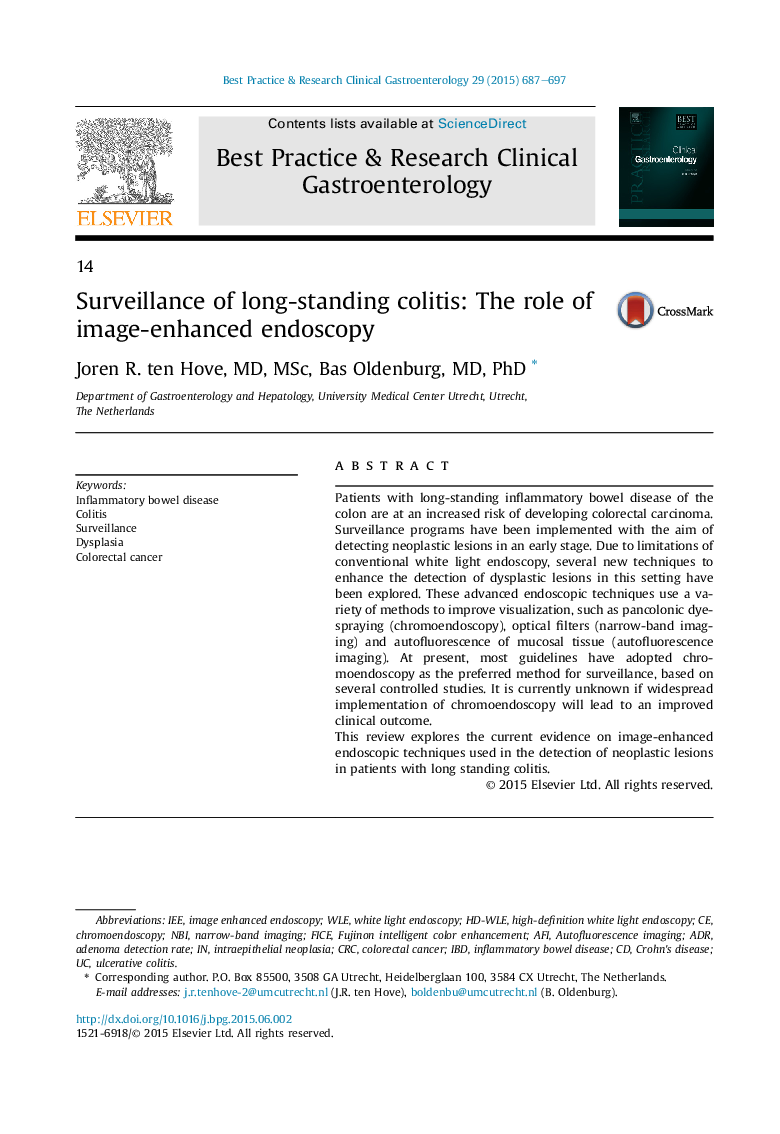| Article ID | Journal | Published Year | Pages | File Type |
|---|---|---|---|---|
| 3254097 | Best Practice & Research Clinical Gastroenterology | 2015 | 11 Pages |
Patients with long-standing inflammatory bowel disease of the colon are at an increased risk of developing colorectal carcinoma. Surveillance programs have been implemented with the aim of detecting neoplastic lesions in an early stage. Due to limitations of conventional white light endoscopy, several new techniques to enhance the detection of dysplastic lesions in this setting have been explored. These advanced endoscopic techniques use a variety of methods to improve visualization, such as pancolonic dye-spraying (chromoendoscopy), optical filters (narrow-band imaging) and autofluorescence of mucosal tissue (autofluorescence imaging). At present, most guidelines have adopted chromoendoscopy as the preferred method for surveillance, based on several controlled studies. It is currently unknown if widespread implementation of chromoendoscopy will lead to an improved clinical outcome.This review explores the current evidence on image-enhanced endoscopic techniques used in the detection of neoplastic lesions in patients with long standing colitis.
